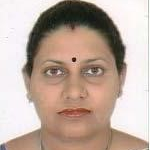International Journal of Intelligent Systems and Applications (IJISA)
IJISA Vol. 10, No. 9, 8 Sep. 2018
Cover page and Table of Contents: PDF (size: 445KB)
Implementation of Carlson based Fractional Differentiators in Control of Fractional Order Plants
Full Text (PDF, 445KB), PP.66-74
Views: 0 Downloads: 0
Author(s)
Index Terms
Carlson method, Fractional differentiators, Reduction techniques, Lower order models, PD and PID controller
Abstract
This paper presents reduced integer order models of fractional differentiators. A two step procedure is followed. Using the Carlson method of approximation, approximated second iteration models of fractional differentiators are obtained. This method yields transfer function of high orders, which increase the complexity of the system and pose difficulty in realization. Hence, three reduction techniques, Balanced Truncation method, Matched DC gain method and Pade Approximation method are applied and reduced order models developed. With these models, fractional Proportional-Derivative and fractional Proportional-Integral-Derivative controllers are implemented on a fractional order plant and closed loop responses obtained. The authors have tried to reflect that the Carlson method in combination with reduction techniques can be used for development of good lower order models of fractional differentiators. The frequency responses of the models obtained using the different reduction techniques are compared with the original model and with each other. Three illustrative examples have been considered and their performance compared with existing systems.
Cite This Paper
Nitisha Shrivastava, Pragya Varshney, "Implementation of Carlson based Fractional Differentiators in Control of Fractional Order Plants", International Journal of Intelligent Systems and Applications(IJISA), Vol.10, No.9, pp.66-74, 2018. DOI:10.5815/ijisa.2018.09.08
Reference
[1]G. Harja et al., “Improvements in Dissolved Oxygen Control of an Activated Sludge Wastewater Treatment Process,” Circuits, Systems and Signal Processing, vol. 35, no. 6, pp. 2259–2281, 2016.
[2]P. J. Torvick and R. L. Bagley, “On the appearance of the fractional derivative in the behaviour of real materials,” ASME Journal of Applied Mech, vol. 51, pp. 294–298, 1984.
[3]R. L. Magin, Fractional Calculus in Bioengineering. Begell House, Connecticut, 2006.
[4]C. A. Monje et al., “Tuning and Auto tuning of Fractional Order Controllers for Industry Applications,” Control Engineering Practice, vol. 16, pp. 798–812, 2008.
[5]M. Axtell and M. E. Bise, “Fractional calculus application in control systems,” Proc. IEEE Nat. Aerospace Electronics Conference, vol. 2, pp. 563-566, 1990.
[6]S. Ladaci and A. Charef, “On Fractional Adaptive Control,” Nonlinear Dynamics, vol. 43, pp. 365–378, 2006.
[7]Y. Jin, Y. Q. Chen and D. Xue, “Time-constant robust analysis of a fractional order proportional derivative controller,” IET Control Theory Applications, vol. 5, pp. 164–172, 2011.
[8]A. Sommacal et al., “Fractional Multi-Models of the Gastrocnemius Frog Muscle,” Journal of Vibration and Control, vol. 14, pp. 1415–1430, 2008.
[9]A. K. Das and T. K. Roy, “Fractional Order EOQ Model with Linear Trend of Time-Dependent Demand,” International Journal of Intelligent Systems and Applications, vol. 7, no. 3, pp. 44-53, 2015.
[10]A. Soukkou and S. Leulmi, “Controlling and Synchronizing of Fractional-Order Chaotic Systems via Simple and Optimal Fractional-Order Feedback Controller,” International Journal of Intelligent Systems and Applications, vol. 8, no. 6, pp. 56-69, 2016
[11]G. Carlson and C. Halijak, “Approximation of fractional capacitors (1/s)1/n by a regular Newton process,” IEEE Trans. Circuit Theory, vol. 11, pp. 210-213, 1964.
[12]K. Matsuda and H. Fujii, “H∞-optimized wave absorbing control: analytical and experimental results,” Journal of Guidance, Control, Dynamics, vol. 16, no. 62, pp. 1146-1153, 1993.
[13]A. Charef, H. Sun, Y. Tsao and B. Onaral, “Fractal systems as represented by singularity function,” IEEE Transactions on Automatic Control, vol. 37, pp. 1465-1470, 1992.
[14]A. Oustaloup, F. Levron, F. Mathieu and F. M. Nanot, “Frequency-band complex non-integer differentiator: characterization and synthesis,” IEEE Transactions on Circuit and Systems-I: Fundamental Theory and Application, vol. 47, pp. 25-39, 2000.
[15]D. Y. Xue, C. Zhao and Y. Q. Chen, “A modified approximation method of fractional order system,” Proc. IEEE International Conference on Mechatronics and Automation, pp. 1043-1048, 2006.
[16]P. Feldman and R. W. Freund, “Efficient linear circuit analysis by Pade approximation via the Lanczos process,” IEEE Transactions on Computer-Aided Designs of Integrated Circuits and Systems, vol. 14, no. 5, pp. 639-649, 1995.
[17]A. C. Antoulas, Approximation of Large-Scale Dynamical Systems. SIAM series on Advances in Design and Control, 2005.
[18]D. Y. Xue and Y. Q. Chen, “Sub-optimum H2 rational approximations to fractional order linear systems,” Proc. ASME 2005 International Design Engineering Technical Conferences and Computers and Information Engineering Conference, Long Beach, California, USA, 2005.
[19]L. T. Pillage and R. A. Rohrer, “Asymptotic Waveform Evaluation for timing analysis,” IEEE Transactions on Computer-Aided Designs of Integrated Circuits and Systems, vol. 9, no. 4, pp. 352-356, 1990.
[20]L. Yi, C. Zhang and G. Wang, “Research of Self-Tuning PID for PMSM Vector Control based on Improved KMTOA,” International Journal of Intelligent Systems and Applications, vol. 9, no. 3, pp. 60-67, 2017.
[21]R. Tiwari and N. Ramesh Babu, “Comparative Analysis of Pitch Angle Controller Strategies for PMSG Based Wind Energy Conversion System,” International Journal of Intelligent Systems and Applications, vol. 9, no. 5, pp. 62-73, 2017
[22]A. Nawikavatan, S. Tunyasrirut and D. Puangdownreong, “Application of Intensified Current Search to Multiobjective PID controller Optimization,” International Journal of Intelligent Systems and Applications, vol. 8, no. 11, pp. 51-60, 2016
[23]N. Shrivastava and P. Varshney, “Rational Approximation of Fractional Order Systems Using Carlson Method,” Proc. IEEE International Conference On Soft Computing Techniques and Implementations ICSCTI, Faridabad, India, pp. 76-80, 2015.
[24]B. Safarinejadia and M. Asad, “Fractional order state space canonical model identification using fractional order information filter,” Proc. IEEE International Symposium on Artificial Intelligence and Signal Processing, pp. 65-70, 2015.
[25]M. Juneja and S. K. Nagar, “Comparative study of model order reduction using combination of PSO with conventional reduction techniques,” Proc. IEEE International Conference on Industrial Instrumentation and Control, pp. 406-411, 2015.
[26]B. Moore, “Principal component analysis in linear systems: controllability, observability and model reduction,” IEEE Transactions on Automatic Control, vol. 26, no. 1, pp. 17-32, 1981.
[27]R. Freund, “Krylov-subspace methods for reduced order modelling in circuit simulation,” Journal of Computational and Applied Mathematics, vol. 123, no. 1, pp. 395-421, 2000.
[28]M. G. Safonov and R.Y. Chiang, “A Schur Method for Balanced Model Reduction,” IEEE Transactions on Automatic Control, vol. 34, no. 7, pp. 729-733, 1989.
[29]I. Podlubny, “Fractional-order Systems and Fractional-order Controllers,” The Academy of Sciences Institue of Experimental Physics, UEF-03-94, Kosice, Slovak Republic, 1994.
[30]C. N. Zhao, D. Y. Xue and Y. Q. Chen, “A fractional order PID tuning algorithm for a class of fractional order plants,” Proc. IEEE International Conference on Mechatronics and Automation, Niagara Falls, Ontario, Canada, pp. 216-221, 2005.
[31]I. Podlubny, “Fractional-Order Systems and PIλDµ-Controllers,” IEEE Transactions on Automatic Control, vol. 44, no. 1, pp. 208-214, 1999.

